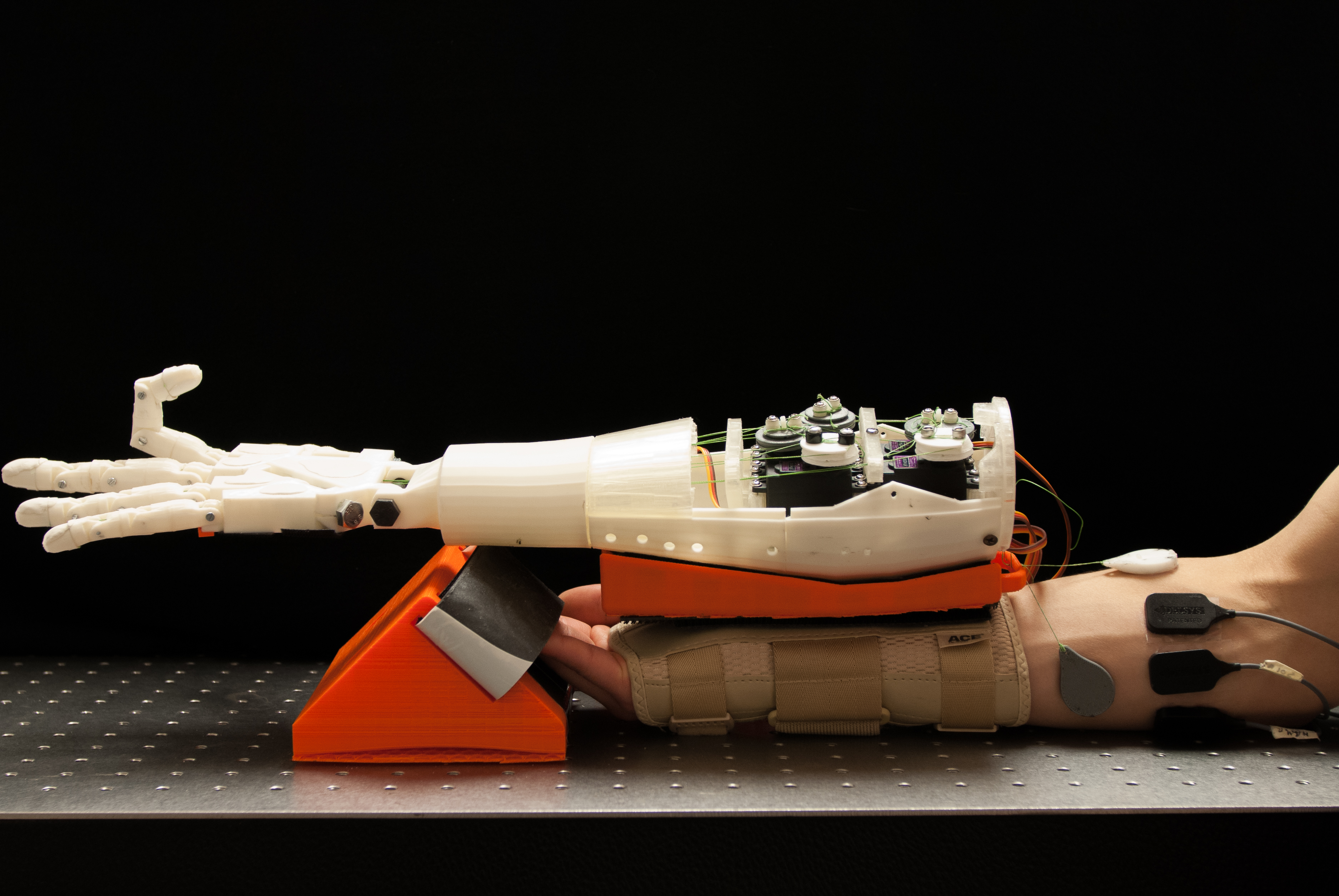Information about the Bretl Research Group.
 The Bretl Research Group’s goals include making prosthetic devices affordable to all who need them, increasing the efficiency and safety of building construction, and lowering barriers to the use of robots for manufacturing automation by small businesses (particularly those owned and controlled by their workers). In pursuit of these goals, we conduct basic research in areas that include electrodiagnostic analysis of brain and muscle activity and control-theoretic analysis of dexterous manipulation and legged locomotion.
The Bretl Research Group’s goals include making prosthetic devices affordable to all who need them, increasing the efficiency and safety of building construction, and lowering barriers to the use of robots for manufacturing automation by small businesses (particularly those owned and controlled by their workers). In pursuit of these goals, we conduct basic research in areas that include electrodiagnostic analysis of brain and muscle activity and control-theoretic analysis of dexterous manipulation and legged locomotion.
Our Principal Investigator is Timothy Wolfe Bretl.
If you would like to learn more of our different research focuses, please expand the buttons below or click here to learn more about us.
DESIGN, ANALYSIS, AND CONTROL OF PROSTHETIC HANDS
Our goal is to improve the functional performance of upper-limb prostheses (e.g., prosthetic hands or arms). We use surface electromyography (EMG) with pattern recognition to enable control. We use vibrotactile, electrotactile, and skin stretch feedback to restore a sense of proprioception and touch. All of this work is done in collaboration with three partners. With Levi Hargrove at the Rehabilitation Institute of Chicago, we study the use of prosthetic hands by people with upper-limb amputations who have received targeted reinnervation. With John Rogers and his research group, we develop flexible, stretchable epidermal electronic sensors that replace standard EMG electrodes. With the Range of Motion Project, we apply our technology to meet the needs of people with upper-limb amputations in Ecuador.
NON-INVASIVE BRAIN-COMPUTER INTERFACING
Real-time analysis of non-invasive neural imaging tools, such as electroencephalography (EEG), enables the creation of a direct link between a computer system and a human user. This direct link, known as a brain-computer interface (BCI), provides users with a channel to communicate their intentions that can be independent of the motor system. Currently, our research is focused on the development of BCI systems that rely on steady-state visual evoked potentials (SSVEPs), a neural response to flickering lights. To improve the performance of SSVEP-based BCIs, we take a cross-disciplinary approach drawing from signal processing, information theory, material science, and cognitive neuroscience. Over the past 10 years, our projects have doubled the performance of SSVEP-based BCIs, demonstrated how new thin-film electronics can be used to enable long-term wear SSVEP-based BCIs, and are now focused on how altered brain-states can be used to improve our scientific understanding of SSVEPs.
AERIAL ROBOTS FOR INSPECTION AND MONITORING
Our goal is to automate the process of building and infrastructure construction monitoring. The purpose of construction monitoring is to provide construction practitioners—owners, contractors, subcontractors, and tradesmen—with the information they need to easily and quickly make project control decisions. These decisions have a direct impact on the overall efficiency and safety of a construction project. Our work, in particular, is driven by the hypothesis that construction cost, delivery time, and environmental impact can be significantly reduced—and safety and productivity can be maximized—with tools that better characterize the extent to which construction plans are being followed (progress monitoring and quality control), and understanding the reasons for performance inefficiencies (activity analysis). Our approach is to derive this information by analysis of images and video streams that are provided by aerial robots with onboard cameras.
MECHANICS AND MANIPULATION OF ELASTIC OBJECTS
Our goal is to derive algorithms for robotic manipulation and perception of elastic objects that work well and that are easy to implement. The approach taken is control-theoretic and is based on the idea that the shape of an elastic object can be described as the solution to a geometric optimal control problem. This idea leads to representations of object shape that significantly reduce the complexity of algorithms. The project is motivated by the need of small businesses to automate handling and assembly of compliant parts. As a case study, it focuses on the robotic installation of a wire harness (a bundle of wires that terminate in electrical connectors). This manufacturing task is hard to automate because it requires reasoning about the deformation of the wire harness.